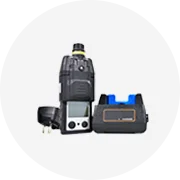Phổ biến trong ngành của bạn






ZCEBOX 6 Cách Bề Mặt Abs Điện Hộp Phân Phối Nhựa Bảng Điều Khiển Bảng Mạch
3,94 US$ - 4,63 US$
Đơn hàng tối thiểu: 5 Cái
Vận chuyển mỗi chiếc: 39,27 US$







Không thấm nước treo tường 16-way JUNCTION nhựa hộp phân phối hộp điện chuyển đổi Hộp bảo vệ
0,45 US$ - 0,80 US$
Đơn hàng tối thiểu: 10 Cái







Zcebox MCB Bảng điều khiển hộp phân phối điện công nghiệp
7,27 US$ - 8,55 US$
Đơn hàng tối thiểu: 5 Cái
Vận chuyển mỗi chiếc: 40,67 US$




Giá tốt trong suốt Single phase Electric Meter hộp 9 cách chất lượng tốt bao vây điện
20,00 US$ - 100,00 US$
Đơn hàng tối thiểu: 1000 Bộ






Kim Loại bảng phân phối cơ sở hộp điện tủ điện Vật liệu dày vật liệu
9,83 US$ - 11,83 US$
Đơn hàng tối thiểu: 10 Mẫu Anh
Vận chuyển mỗi chiếc: 11,41 US$







Hộp Phân Phối Điện Hộp Phân Phối Điện Hộp Phân Phối Gắn Trần Kích Thước Mcb
2,50 US$ - 3,50 US$
Đơn hàng tối thiểu: 1 Cái






ZCEBOX 12 Way 35 Mét Din Rail Phân Phối Hộp Kích Thước Của Bảng Phân Phối Bề Mặt Spn Way Hộp Phân Phối
Sẵn sàng vận chuyển
3,41 US$ - 3,42 US$
Đơn hàng tối thiểu: 1 Cái
Vận chuyển mỗi chiếc: 99,81 US$






Kích Thước Hộp Phân Phối Bảng Điện
Sẵn sàng vận chuyển
13,80 US$ - 15,77 US$
Đơn hàng tối thiểu: 1 Cái
Vận chuyển mỗi chiếc: 239,50 US$






Ngoài trời Điện công nghiệp 3 pha Úc Không Thấm Nước Xách Tay Phân Phối Điện Hộp Hội Đồng Quản Trị kích thước
191,00 US$ - 209,00 US$
Đơn hàng tối thiểu: 1 Bộ






B & J Tủ Lưu Trữ Pin Lithium Ngoài Trời 400X300X150 Kích Thước Bao Vây Hộp Phân Phối Điện
13,50 US$ - 14,50 US$
Đơn hàng tối thiểu: 50 Cái





Hộp Db Điện Vật Liệu ABS 15 Cách Hộp Phân Phối Điện Hộp Phân Phối Ngoài Trời Gắn Kết
5,00 US$ - 6,00 US$
Đơn hàng tối thiểu: 1000 Cái
Vận chuyển mỗi chiếc: 5,92 US$
Các tìm kiếm liên quan:
hộp phân phối ac dchộp phân phối nhôm điệnhộp điều khiển phân phối điệnhiển thị phân phối điện tửhộp điều khiển phân phốiphân phối điệnphân phối vật lýnhà cung cấp hộp phân phối điệnindoor electrical distribution boxthiết kế hộp phân phối điệnhộp phân phối điện sâuhộp phân phối trung quốchộp phân phối ulhộp phân phối cehộp phân phối 72






Hộp Phân Phối Điện 12-16 Chiều Ingelec Giá Tốt Từ Các Thiết Bị Điện
0,80 US$ - 1,80 US$
Đơn hàng tối thiểu: 800 Cái
Vận chuyển mỗi chiếc: 15,19 US$






Nhựa Ip65 Cáp Quang Cáp Điện Không Thấm Nước Điện Thiết Bị Điện Cung Cấp Hộp Phân Phối Cho Điện
7,15 US$ - 7,89 US$
Đơn hàng tối thiểu: 10 Cái
Vận chuyển mỗi chiếc: 3,96 US$





Giá tốt một loạt 12-16 cách điện hộp phân phối điện từ thiết bị điện nguồn cung cấp
0,27 US$ - 0,55 US$
Đơn hàng tối thiểu: 50 Cái
Vận chuyển mỗi chiếc: 1,13 US$





Txm-series 2-24 36way ngoài trời điện bề mặt gắn kết hộp phân phối điện không thấm nước Hộp phân phối điện cho MCB
1,30 US$ - 9,50 US$
Đơn hàng tối thiểu: 5 Cái






Phân phối điện busbar phân phối điện eltrical hộp ngoài trời
275,00 US$ - 285,00 US$
Đơn hàng tối thiểu: 10 Cái











SHLX-PV Loạt Ngoài Trời Không Thấm Nước Nhựa Điện 24 Way Phân Phối Kích Thước Hộp
13,00 US$ - 100,00 US$
Đơn hàng tối thiểu: 5 Cái






Ôn châu 4way tuôn ra gắn kết loại phân phối ban ban kim loại điện chỉnh kích thước hộp
5,00 US$ - 8,00 US$
Đơn hàng tối thiểu: 200 Cái






Hộp Phân Phối Điện Công Nghiệp Kết Hợp Điện Di Động Ngoài Trời IP67 3 Chiều Chống Nước
39,00 US$ - 40,00 US$
Đơn hàng tối thiểu: 5 Đơn vị






24 kênh điện distro Bảng điều chỉnh điện hộp phân phối với socapex twistlock Kết quả đầu ra
716,00 US$ - 1.268,00 US$
Đơn hàng tối thiểu: 5 Cái












3 Pha Ngoài Trời Trong Nhà Công Nghiệp Điện Năng Chống Thấm Nước IP65 Điện Úc Phân Phối hộp Điều
140,00 US$ - 150,00 US$
Đơn hàng tối thiểu: 2 Cái
Vận chuyển mỗi chiếc: 23,72 US$






IP65 HA-4ways Không Thấm Nước 10 Cặp 4 Cách 63A Ha-4 Hộp Phân Phối Sử Dụng Cho Năng Lượng Điện
Sẵn sàng vận chuyển
4,95 US$ - 5,41 US$
Đơn hàng tối thiểu: 10 Cái
Vận chuyển mỗi chiếc: 8,10 US$






Hộp Phân Phối Bảng Điện Chống Nước Kích Thước Hộp Ngắt Mạch Ngoài Trời
2,70 US$ - 2,90 US$
Đơn hàng tối thiểu: 5 Cái






Ôn Châu Sản Phẩm Quang Học 2 Way Mcb Điện Phân Phối Kích Thước Hộp
0,44 US$ - 0,48 US$
Đơn hàng tối thiểu: 1 Cái






Tủ Điện Điều Khiển Công Nghiệp Tùy Chỉnh Hộp Phân Phối Điện Áp Thấp Chạy Điện
24,22 US$ - 26,56 US$
Đơn hàng tối thiểu: 1 Đơn vị








Kích Thước Khác Nhau Hộp Phân Phối Điện Hộp Kim Loại Điện
10,00 US$ - 50,00 US$
Đơn hàng tối thiểu: 1 Cái






Inwall dB hộp điện 3 pha 12/18/24/36/48 cách Phân phối hộp nhà khách sạn thiết kế văn phòng thép hộp điện
41,00 US$ - 42,90 US$
Đơn hàng tối thiểu: 30 Cái
Vận chuyển mỗi chiếc: 25,55 US$





Hộp phân phối XL-21 điện áp thấp ba pha tùy chỉnh bảng điện Tủ thiết bị đóng cắt
1,20 US$
Đơn hàng tối thiểu: 5 Cái






Kích Thước Hộp Phân Phối Điện Dòng TSM, Các Loại Hộp Phân Phối Điện
1,50 US$ - 8,00 US$
Đơn hàng tối thiểu: 3000 Cái






Không thấm nước điện Kim Loại bảng điều chỉnh hộp IK10 thép không gỉ 304 phân phối bảng điều khiển hộp
10,00 US$ - 36,00 US$
Đơn hàng tối thiểu: 5 Cái






Siêu bán bảng phân phối Điện 26 kênh điện distro box với ổ cắm phổ quát và 63A ổ cắm chống thấm nước
547,00 US$ - 2.558,00 US$
Đơn hàng tối thiểu: 5 Đơn vị





Sự Lựa Chọn Suntree Cung Cấp Điện Ac Và Dc Điện Phân Phối Nhựa Kích Thước Hộp
11,85 US$ - 15,24 US$
Đơn hàng tối thiểu: 1 Cái






Bề mặt gắn kết kim loại 10 cách ngoài trời điện phân phối điện Bảng điều khiển hộp phân phối điện
7,37 US$ - 7,70 US$
Đơn hàng tối thiểu: 1000 Cái






SAIP/SAIPWELL IP55 Kích Thước Lớn Tủ Đứng Hộp Phân Phối Điện
260,00 US$ - 520,00 US$
Đơn hàng tối thiểu: 1 Cái


Bao Vây HG PVC ABS Nhựa Điện Bảng Điện Phân Phối Điện Kích Thước Hộp
0,40 US$ - 1,00 US$
Đơn hàng tối thiểu: 200 Cái






SUNTREE Thiết Kế Mới SHNP IP65 Bảng Điện Kim Loại Mcb Hộp Phân Phối Chính Kích Thước 36 Cách
10,00 US$ - 15,00 US$
Đơn hàng tối thiểu: 10 Cái
Các danh mục hàng đầu
Giới thiệu về kích thước hộp phân phối điện
Tìm kiếm kích thước hộp phân phối điện. trên Alibaba.com và duyệt qua nhiều lựa chọn về các nhà cung cấp tuyệt vời. Tiết kiệm tiền khi dự trữ một thành phần để sử dụng trong một số mặt hàng thực phẩm khác nhau. Phần lớn kích thước hộp phân phối điện. có dạng bột dễ hòa tan và dễ trộn với các thành phần khác. Sử dụng như một chất thay thế thơm ngon, không chứa caffein cho cà phê hoặc để làm một số loại thuốc thảo dược. Các nhà sản xuất thực phẩm và công ty dược phẩm có thể hưởng lợi từ việc sử dụng thành phần hoàn toàn tự nhiên này.
Tất cả kích thước hộp phân phối điện. có mức độ tinh khiết rất cao, giúp sản phẩm cuối cùng không có các chất gây ô nhiễm tiềm ẩn. Bột màu trắng giữ được vẻ trung tính khi trộn các thành phần và sẽ không ảnh hưởng đến màu sắc. Các chất chiết xuất sẫm màu hơn cũng có sẵn và có thể mang lại bóng râm bổ sung trong thành phần sản phẩm cuối cùng. Khi uống vào cơ thể, bột inulin có trong sản phẩm có thể có tác dụng lợi khuẩn giúp cải thiện sức khỏe hệ tiêu hóa theo thời gian.
kích thước hộp phân phối điện được bán trên Alibaba.com tuân thủ các tiêu chuẩn cấp thực phẩm và cấp y tế để đảm bảo an toàn cho khách hàng. Các nhà cung cấp thường sẽ đóng gói sản phẩm trong túi hút chân không để bảo quản độ tươi và chất lượng. Đặc biệt những lô hàng lớn thường được đựng trong thùng phuy dễ vận chuyển. Hầu hết các chất chiết xuất sẽ mang lại thêm hương vị ngọt ngào để tạo cho công thức một hương vị dễ chịu hơn.
Duyệt qua kích thước hộp phân phối điện. trên Alibaba.com và tận hưởng chi phí thấp của một thành phần chính quan trọng được sử dụng trong các loại dược phẩm và đồ uống tốt cho sức khỏe. Cho dù người tiêu dùng cần cải thiện sức khỏe hệ tiêu hóa hoặc tạo ra đồ uống có hương vị cà phê mà không có caffeine, thì vẫn có rất nhiều lựa chọn có sẵn. Mua sắm xung quanh và tìm các nhà cung cấp tốt nhất có thể giao hàng với bất kỳ số lượng nào cần thiết.
Tất cả kích thước hộp phân phối điện. có mức độ tinh khiết rất cao, giúp sản phẩm cuối cùng không có các chất gây ô nhiễm tiềm ẩn. Bột màu trắng giữ được vẻ trung tính khi trộn các thành phần và sẽ không ảnh hưởng đến màu sắc. Các chất chiết xuất sẫm màu hơn cũng có sẵn và có thể mang lại bóng râm bổ sung trong thành phần sản phẩm cuối cùng. Khi uống vào cơ thể, bột inulin có trong sản phẩm có thể có tác dụng lợi khuẩn giúp cải thiện sức khỏe hệ tiêu hóa theo thời gian.
kích thước hộp phân phối điện được bán trên Alibaba.com tuân thủ các tiêu chuẩn cấp thực phẩm và cấp y tế để đảm bảo an toàn cho khách hàng. Các nhà cung cấp thường sẽ đóng gói sản phẩm trong túi hút chân không để bảo quản độ tươi và chất lượng. Đặc biệt những lô hàng lớn thường được đựng trong thùng phuy dễ vận chuyển. Hầu hết các chất chiết xuất sẽ mang lại thêm hương vị ngọt ngào để tạo cho công thức một hương vị dễ chịu hơn.
Duyệt qua kích thước hộp phân phối điện. trên Alibaba.com và tận hưởng chi phí thấp của một thành phần chính quan trọng được sử dụng trong các loại dược phẩm và đồ uống tốt cho sức khỏe. Cho dù người tiêu dùng cần cải thiện sức khỏe hệ tiêu hóa hoặc tạo ra đồ uống có hương vị cà phê mà không có caffeine, thì vẫn có rất nhiều lựa chọn có sẵn. Mua sắm xung quanh và tìm các nhà cung cấp tốt nhất có thể giao hàng với bất kỳ số lượng nào cần thiết.

















